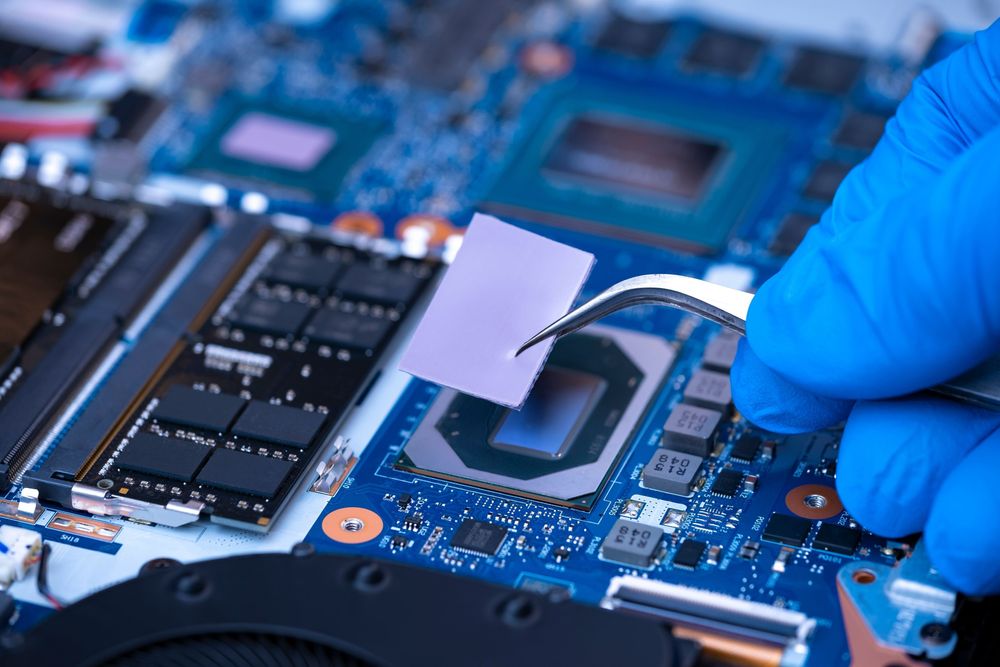
Acrylic Vs. Silicone Thermal Gap Pads: Are You Over Spec’d?
Heat is the enemy of electronic devices. To prevent premature damage and extend device life, heat needs an exit strategy. When it comes to preventing heat buildup in sensitive components, thermal gap pads can play a critical role.
Effective thermal gap materials are well worth the investment, and interface pads offer advantages that can save both time and money. Unlike thermal paste, thermal interface pads offer key advantages by simplifying and speeding up assembly — simply peel the liner, apply and you’re done.
For significant cost savings, weighing acrylic gap pads vs silicone counterparts can be worth a look. If acrylic gap pads are both safe and suitable for your application, why overpay for silicone? In fact, certain high performance acrylic gap pads can match or exceed the performance of a silicone product and come with significant cost savings.
Silicone and acrylic gap pads: How they manage the heat
Thermal gap pads are soft, conformable polymers blended with thermal materials that come with a tacky surface. They are designed to fill the small air gaps between heat-producing components and heat sinks. Because air is a poor conductor of heat, a gap pad effectively replaces trapped air, reducing thermal resistance and helping the device run cooler and longer.
Manufactured by 3M™ and other brands, both silicone and acrylic thermally conductive interface pads offer several benefits:
- Conformable – Easily adapts to surfaces, eliminating small gaps for improved heat transfer.
- Simpler assembly – Unlike thermal paste, gap pads offer an easy, no-mess application.
- Convenient formats – Available in sheets and rolls, they can be precision die-cut to fit different interface and heat sink designs.
- Long-term stability – Unlike thermal paste or phase change materials, solid-state gap pads last longer and don’t require frequent replacement.
Thermally conductive interface materials (also known as TIMs) are just one example of thermal management materials that SRP custom converts to prevent overheating in electronic devices, which you can learn about in our blog.
Silicone gap pads vs. acrylic gap pads: A side-by-side comparison
Wondering if acrylic is a viable alternative to silicone for your thermally conductive interface material? As always, it depends on the application and key performance factors. To help you get started, this comparison chart provides a high-level look at how silicone performance stacks up against acrylic.
| Property | Silicone gap pads | Acrylic gap pads |
| Thermal conductivity | High: High performance materials can reach 6 W/m-K. | Moderate: Some products have a similar performance to silicone counterparts, upper range is usually around 3.0 W/m-K. |
| Temperature stability | High: Maintains flexibility after exposure. | Moderate: Can stiffen after prolonged exposure to higher temperatures. |
| Compression & conformability | Excellent: More flexible and better contact small gaps and varied surfaces allow for better heat dissipation. | Moderate to excellent: Typically less flexible, but high-performance alternates are soft and pliable, reducing stress on delicate components. |
| Outgassing | Higher: Silicone can release siloxane gases when exposed to higher operating temperatures, which can contaminate or degrade sensitive components. | Minimal: Halogen free and no outgassing, ideal for optical, automotive and high-end electronics. |
| Electrical insulation (dielectric strength) | Excellent: Strong insulation properties through elevated operating temperatures. | Good: Meets most insulation requirements within optimal temperature range. |
| Flame retardancy | Good: Some products rated UL94 V2, others rated UL V0. | Good: Some products rated UL94 V2, others rated UL V0. |
| Durability and aging | Resilient, maintains flexibility over time. | Good, but can stiffen over time and exposure to elevated temperatures. |
| Availability and lead time | Can be subject to supply chain issues, leading to longer lead times. | Readily available, can be a faster alternative in a pinch. |
| Cost | Higher: Premium material with a higher price point. | Lower: Can be a cost-effective alternative in the absence of performance trade-offs. |
When to choose acrylic gap pads over silicone
In a nutshell, silicone gap pads typically offer better conformability and higher temperature resistance, which are critical performance factors when your components generate a high amount of heat.
However, when outgassing, cost and lead time are overriding concerns, acrylic products can meet or exceed performance requirements — saving time and money.
Keep in mind, there are exceptions, and performance varies widely by product. Consider high-performance acrylic pads, such as 3M™ 5590H. These are designed to match or outperform certain silicone products – saving you time and money.
To learn more, download our data sheets for 3M acrylic gap pads.
Partner with SRP for custom thermal management solutions
Need help choosing the right thermal gap pad? Contact SRP to talk to an expert. Fill out our online form or give us a call — you’ll hear from us within one business day.
